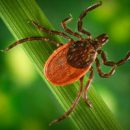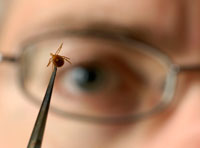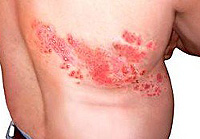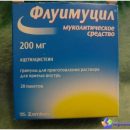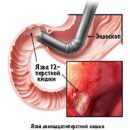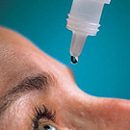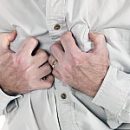The article describes the symptoms of scarletins in children, its causes, periods of development of the disease and possible complications.
Content
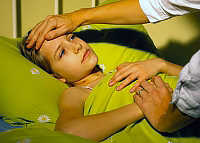 Diagnosis «scarlet fever» Now they put as often as a few decades ago. But still, this disease has not yet become something exotic. Sharp rise temperature, characteristic rash, angina — This is an obvious reason for calling a doctor. It is worth remembering: not as scary scarlet, as its complications.
Diagnosis «scarlet fever» Now they put as often as a few decades ago. But still, this disease has not yet become something exotic. Sharp rise temperature, characteristic rash, angina — This is an obvious reason for calling a doctor. It is worth remembering: not as scary scarlet, as its complications.
What is Scarlatina
Scarlet fever — This is an infectious disease that is transmitted mainly by airborne droplets. Scarlay pathogens — Streptococci Group A — can be conditionally called a wide range of action by bacteria. They are the frequent cause of an angino, chronic inflammation of almonds (tonsillitis) and throat (pharyngitis). In order for a person with scarletin, it should be sensitive to toxin, which is produced by bacteria. Therefore, even in one family, the first child may get sick, and the second — No. Scarlatina in adults — The phenomenon is rare, usually serious problems do not deliver and is well treated.
Periodization of the disease
In classical development, four periods are distinguished during the disease:
- incubation;
- elementary;
- rash;
- Reconvision.
When Scarld, the incubation period is usually from 2 to 7 days. Term «incubation» Doctors denote the time gap between the moment when the pathogen got into the body, and the appearance of the first symptoms. «Initial» call the period between the appearance of the first symptoms and the appearance of rashes. It is very short and rarely exceeds 1-2 days. Punches on the body appear almost immediately and disappear by 2-6 days. It turns out that the rash period lasts from 1-2 to 6-7 days. Its replaces the most pleasant period — recovery by scientific — Recognitiveness. It lasts until the 10-14th day of the disease. The child is normalized by all vital processes, the skin peels off, sometimes peels. Danger in this period is that the patient remains very sensitive to re-infection with streptococci. As a result, there are sometimes serious complications: glomerulonephritis, arthritis, rarely — Brain lesions (Korea Sidengama) or heart valves.
How to recognize scarletin
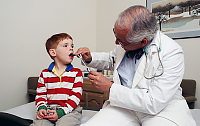 With scarlet, the symptoms are very quickly folded into a characteristic clinical picture. The pathogen most often enters the body of the child with air-droplets and is localized in almonds. Here he breeds, which causes inflammation of almonds (tonsilitis) and the development of an angina. Zev with inspection — Bright red. But at the same time, the solid sky looks healthy. At the beginning of the disease in the language there is a rich grayish flare. On the 3-5th days of the disease, another characteristic symptom occurs — «crimson» language. Language nipples increase significantly in size, and the body itself acquires bright red color. On the 6-8th days, the language acquires a normal form, but for a very long time (up to 2-3 weeks) on its surface clearly visible.
With scarlet, the symptoms are very quickly folded into a characteristic clinical picture. The pathogen most often enters the body of the child with air-droplets and is localized in almonds. Here he breeds, which causes inflammation of almonds (tonsilitis) and the development of an angina. Zev with inspection — Bright red. But at the same time, the solid sky looks healthy. At the beginning of the disease in the language there is a rich grayish flare. On the 3-5th days of the disease, another characteristic symptom occurs — «crimson» language. Language nipples increase significantly in size, and the body itself acquires bright red color. On the 6-8th days, the language acquires a normal form, but for a very long time (up to 2-3 weeks) on its surface clearly visible.
However, this course does not stop the disease, the microbes on lymphatic vessels migrate into regional lymph nodes, primarily in the submandibular. Streptococcus life leads to inflammation of lymph nodes (lymphadenitis). This is evidenced by their increase and pain. Sometimes Streptococcus gets to the area of the ears and becomes the cause of otitis.
One of the products of bacteria is toxins. They fall into the blood and cause a child in a child, headache and often vomiting.
Other components of the causative agent provoke various allergic reactions in a patient. One of them is a rash. With scarlet she is most often bright and small. First of all, rash is striking face and neck, while leaving the intact nasolabial triangle (Triangle Filatova), which serves as a characteristic sign of Scarlag. Next, the rash is very quickly distributed throughout the body, the skin acquires roughness. In the places of natural folds, at the bottom of the abdomen, on the sides it is located so tightly, which forms solid lines (symptom of grazing). Disappearing, rash does not leave pigmentation: skin lesions are replaced by peeling, and the skin can peel in the hands and feet.


